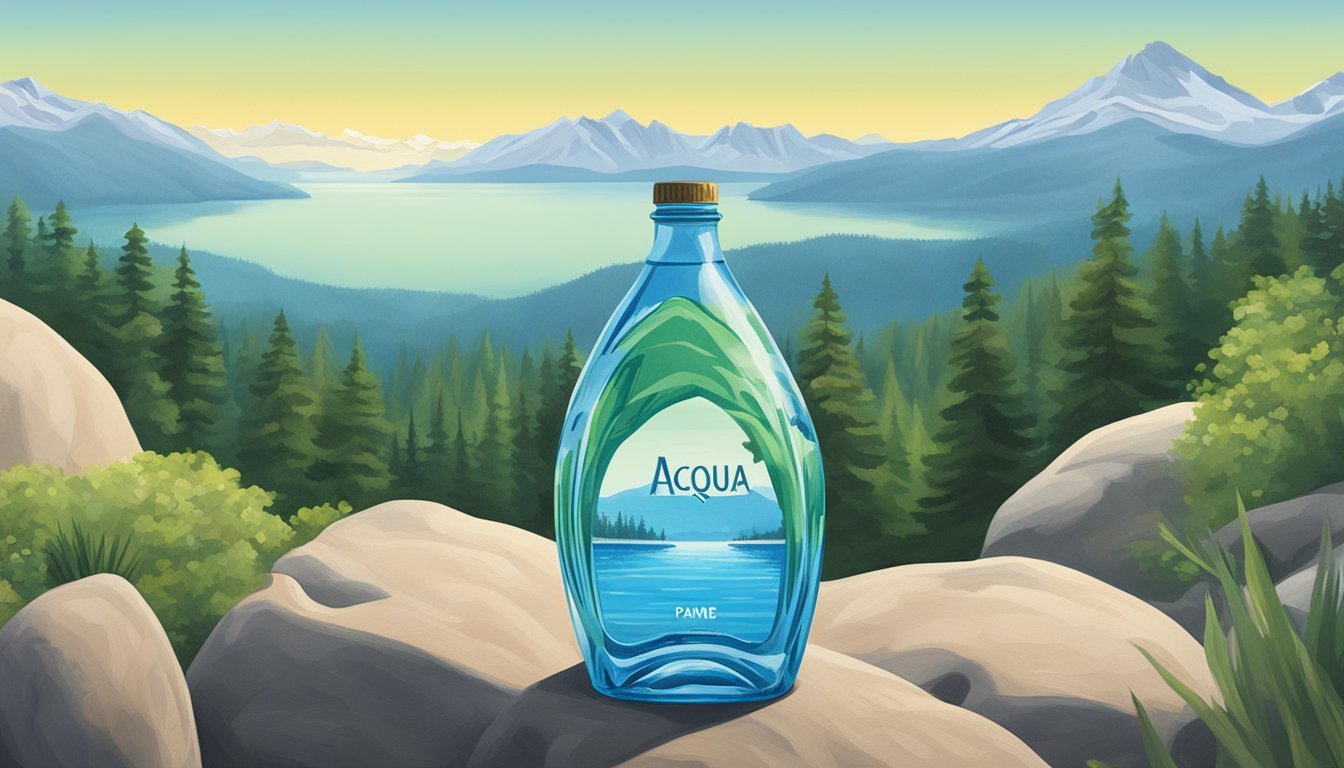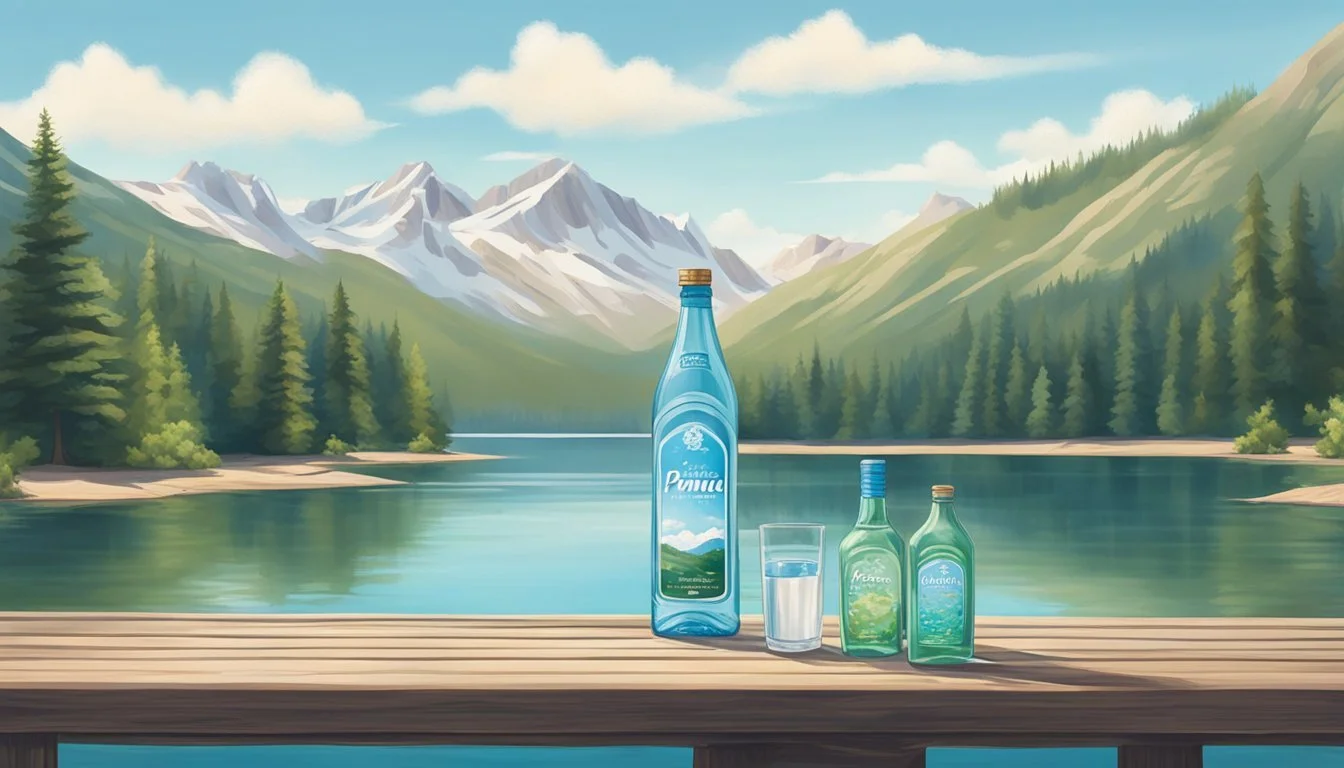Acqua Pana vs. Tahoe
Which Bottled Water is Better for You?
When it comes to bottled water brands, Acqua Panna and Tahoe have made their marks in the market with distinct characteristics that appeal to different preferences. Originating from Italy, Acqua Panna is prized for its smooth texture and balanced mineral content. The brand boasts a pH level that adds to its reputation for delivering a refreshingly soft taste.
Tahoe, on the other hand, offers water sourced from the pristine Sierra Nevada mountains. Known for its clean, crisp flavor, Tahoe bottles a natural essence that's reminiscent of the pure wilderness. This attribute makes it a favorite among those who appreciate a straightforward, no-frills hydration experience.
In comparing Acqua Panna and Tahoe, Acqua Panna's refined mineral profile and taste often edges out Tahoe's simpler, but equally refreshing composition. The ultimate choice depends on whether you prefer a mineral-rich experience or a pure, straightforward refreshment.
The Rise of Bottled Water
Bottled water has evolved from a convenience option to a staple product in modern society, influenced by health considerations, portability, and brand preferences.
A Brief History
The history of bottled water dates back to the 18th century when mineral water began to be bottled for therapeutic uses. Early examples of this include the commercialization of water from natural springs in Europe. Evian, one of the oldest water brands, began bottling water in the early 19th century.
In the United States, bottled water gained traction in the 20th century. Advances in bottling technology and the advent of plastic bottles in the 1970s made it more accessible and affordable. The rise of brands like Dasani and Aquafina in the late 20th century further cemented its place in consumer markets.
Modern Bottled Water Industry
Today, the bottled water industry is a multibillion-dollar global market dominated by numerous brands. Fiji and Evian are often associated with premium bottled water due to their exotic sources and high-quality standards. Major players like Dasani and Aquafina offer widespread availability and affordability, making bottled water a popular choice across various demographics.
The industry has also seen a surge in flavored and enhanced waters, catering to health-conscious consumers. Sustainability concerns have driven innovation in packaging, with an increased focus on recyclable materials. Global consumption trends indicate a steady rise, reflecting shifting consumer preferences for bottled over tap water due to perceived purity and convenience.
Assessing Water Quality
Comparing Acqua Panna and Tahoe bottled waters requires examining their health implications, water source, treatment processes, pH levels, and mineral content. Both brands aim to provide a pure and refreshing experience but differ in their methods and origins.
Health Implications
Health standards for bottled water are regulated by the EPA. Both Acqua Panna and Tahoe adhere to these guidelines. Acqua Panna, sourced from the Apennine Mountains in Italy, boasts a clean profile free of contaminants.
Tahoe, on the other hand, is sourced from Sierra Nevada aquifers and undergoes stringent purification to ensure safety. Consumers prioritize low contaminant levels and beneficial mineral content. Both brands meet these criteria but differ in taste and perceived health benefits due to their unique mineral compositions.
Water Source and Treatment
Acqua Panna comes from the Apennine Mountains, tapping into natural springs. This mineral water is naturally filtered through limestone, enhancing its smooth taste and clean profile.
Tahoe sources its water from Sierra Nevada aquifers, known for providing pure groundwater. The water undergoes advanced purification processes, ensuring a consistent and high-quality product. The origin and treatment of the water significantly influence its taste and mineral content, making each brand distinct.
PH Levels and Mineral Content
Acqua Panna has a pH level around 8.2, making it slightly alkaline. This contributes to its soft, smooth taste and potential health benefits. It contains essential minerals like calcium and magnesium, which enhance its overall profile.
Tahoe shows a neutral pH, closer to 7. It also delivers a balanced mineral content but places more emphasis on purity and taste similar to high-quality tap water. The differences in pH levels and mineral content affect both taste and potential health advantages.
Comparing Acqua Panna and Tahoe
Acqua Panna and Tahoe both offer distinct experiences in terms of their origin, taste profile, and packaging. This comparison explores these aspects to help you choose the better option for your hydration needs.
Origin and Source
Acqua Panna is sourced from the hills of Tuscany in Italy, drawing from natural springs in the Italian Alps. Its origin is renowned for its pristine environment, contributing to the water’s purity and quality.
Tahoe, on the other hand, is sourced from the natural springs surrounding Lake Tahoe in the western United States. These springs are known for their clear, crisp water stemming from the mountainous region. Both sources emphasize a commitment to preserving the natural springs from which they are drawn.
Taste Profile
Acqua Panna offers a smooth, slightly alkaline taste. Its mineral composition includes calcium and magnesium, which contribute to its balanced, palatable flavor. Many consumers appreciate its delicate taste, making it suitable for pairing with fine dining.
Tahoe’s taste is characterized by its crispness and refreshing quality. It has a neutral pH, which makes it taste pure and clean. The water is noted for not having any aftertaste or unpleasant flavors, appealing to those who prefer a straightforward hydration experience without any mineral-heavy undertones.
Packaging and Sustainability
Acqua Panna comes in both plastic and glass bottles, with a recent push towards using more recycled plastic for their containers. Their glass bottle options are often favored in high-end restaurants for their elegance and lower environmental footprint.
Tahoe emphasizes environmentally friendly packaging with a focus on sustainability. They utilize recycled plastic in their bottles and are committed to reducing their environmental impact. Additionally, Tahoe offers refillable glass bottles as part of an initiative to minimize single-use plastics. Both brands strive to balance utility and environmental responsibility, but the choice may come down to personal preference for packaging type.
Nutritional Comparison
When comparing Acqua Panna and Tahoe bottled water, their nutritional content is essential to consider. This encompasses electrolytes, minerals, and potential health benefits that each brand provides.
Electrolyte and Mineral Breakdown
Acqua Panna is sourced from the Apennine Mountains in Tuscany. It boasts a mineral-rich profile with a unique balance of electrolytes. The water contains calcium, magnesium, and low levels of sodium. This makes it ideal for those interested in a light, neutral taste.
Mineral Acqua Panna (mg/L) Tahoe (mg/L) Calcium 32 Varies Magnesium 6.9 Varies Sodium 6.5 Low Potassium ~0 Moderate
Tahoe water, sourced from the pristine Tahoe Basin, offers a different mineral profile. Though it varies, Tahoe is higher in potassium and maintains a relatively low sodium content. The source's natural filtration through granite rather than limestone affects its mineral composition significantly.
Health Benefits
Acqua Panna's slightly alkaline nature (pH ~8.0) can help maintain balanced body pH. Its calcium and magnesium are vital for bone health and muscle function. The low sodium level is particularly beneficial for those monitoring sodium intake for heart health.
Tahoe water has a reputation for pristine purity. Its variable yet generally moderate levels of potassium contribute to heart and muscle health. The water’s low sodium content and natural mineral filtration process offer an appealing choice for those seeking a refreshing, healthy hydration option.
Both waters, with their distinct mineral profiles, offer varied health benefits catering to different needs and preferences.
Consumer Experience
Choosing between Acqua Panna and Tahoe water involves not just taste but also the perceptions and expert opinions that surround these brands. This section examines what consumers think and what water sommeliers say.
Brand Perceptions
Acqua Panna is often seen as a premium choice with a rich history. Its source, nestled in the Tuscan hills, adds a layer of authenticity and luxury. Many consumers appreciate its smooth taste and lack of an aftertaste. It's frequently associated with fine dining and high-end restaurants.
Conversely, Tahoe water is praised for its purity and consistent quality. Originating from the pristine Tahoe Basin, this brand appeals to health-conscious individuals who value clean, refreshing water. Despite being less marketed as a luxury item, its reputation is solid among outdoor enthusiasts and those seeking reliable hydration.
Water Sommelier Insights
Water sommeliers note that Acqua Panna has a medium mineral content, giving it a balanced taste that complements a variety of foods. Its pH level tends to be slightly alkaline, which many find beneficial for digestion. The brand's history and source contribute significantly to its perceived quality.
Tahoe water, on the other hand, is recognized for its crisp and clean profile, with low mineral content. Sommeliers highlight its suitability for those preferring minimally altered water, emphasizing its neutral pH. The unpolluted source from the Tahoe Basin is a significant selling point, underscoring its natural purity and refreshing taste.
Environmental Impact
Acqua Panna and Tahoe bottled waters both aim to address their environmental responsibility. Key differences include their carbon footprints and their commitment to sustainable practices.
Carbon Footprint
Acqua Panna primarily uses glass bottles, which have a higher initial CO2 cost but are more recyclable. Tahoe, on the other hand, often relies on plastic bottles, which are lightweight, leading to lower transportation emissions but are less environmentally friendly regarding decomposition and reuse.
In terms of transportation, Acqua Panna's international shipping contributes significantly to its CO2 emissions. Tahoe benefits from more localized distribution, reducing CO2 output.
Comparatively, glass bottles do lead to higher energy consumption during production and transport due to their weight but provide long-term environmental benefits if recycled correctly.
Sustainable Practices
Acqua Panna has taken steps towards sustainability by ensuring its glass bottles are fully recyclable. Additionally, they have implemented renewable energy sources in production facilities and support water stewardship initiatives that align with environmental goals.
Tahoe is focusing on using recycled plastic (rPET) for their bottles, attempting to mitigate the pollution caused by traditional plastic. They have also developed local partnerships to protect natural water sources and maintain biodiversity around their water catchment areas.
Both brands are moving towards greener operations, but their methods differ—Acqua Panna emphasizes circular economy principles with glass, while Tahoe prioritizes improvements within plastic bottle use.
Market Presence and Accessibility
Both Acqua Panna and Tahoe offer different experiences when it comes to how easily and where you can find them, as well as the cost and perceived value of each brand.
Availability in Grocery Stores
Acqua Panna, produced by San Pellegrino, enjoys broad distribution through Coca-Cola's vast network. It is available in most major grocery chains including Walmart, Safeway, and Kroger. This makes it a convenient option for many shoppers. Tahoe, on the other hand, is not as widely distributed. While it can be found in select regional stores and specialty outlets, it is less commonly seen in national chains. Consumers may need to order it online or visit specific stores to find it.
Pricing and Value
When it comes to pricing, Acqua Panna is generally on the premium side. A 750ml bottle typically costs around $2.50 to $3.00. Its position as a higher-end water brand reflects not just the cost, but also the perceived value of its Tuscan spring origins and smooth taste profile. Tahoe, while also a premium offering, tends to be slightly less expensive, often priced at $2.00 to $2.50 for a similar size bottle. In some cases, buyers might find better deals with Tahoe because of promotional sales, but this varies by region and retailer. Here, Tahoe can provide a balanced mix of quality and affordability.
The Bottom Line
Acqua Panna and Tahoe both offer clean drinking water but cater to different preferences.
Acqua Panna is sourced from Tuscany and delivers a smooth, velvety taste profile. Its neutrality makes it a favorite among consumers who prefer still water without any mineral aftertaste.
Tahoe, on the other hand, offers a crisper flavor reminiscent of fresh mountain springs. It’s ideal for those who enjoy a refreshing, slightly brisk taste.
For individuals ranking from worst to best, personal preference plays a significant role.
Taste Profile Comparison:
Brand Taste Notes Best Served At Acqua Panna Smooth, neutral, velvety 10-12°C (50-54°F) Tahoe Crisp, fresh, mountain spring-like Cold
Key Points:
Acqua Panna: Best for neutral palates, preferred at moderate cool temperatures.
Tahoe: Offers a refreshing taste, best enjoyed chilled.
Choosing between Acqua Panna and Tahoe ultimately boils down to personal preference and taste. Each has unique characteristics that may appeal differently depending on individual tastes and occasions.





